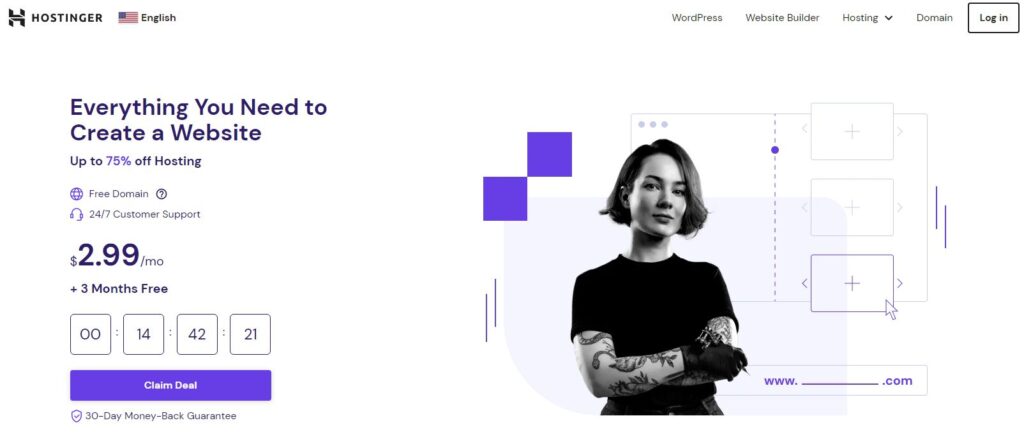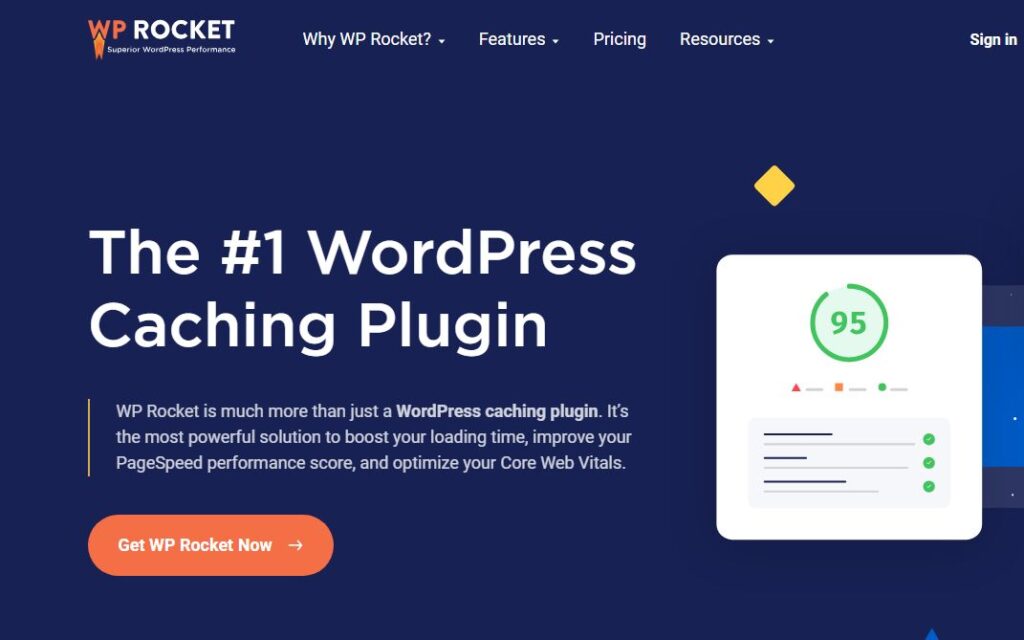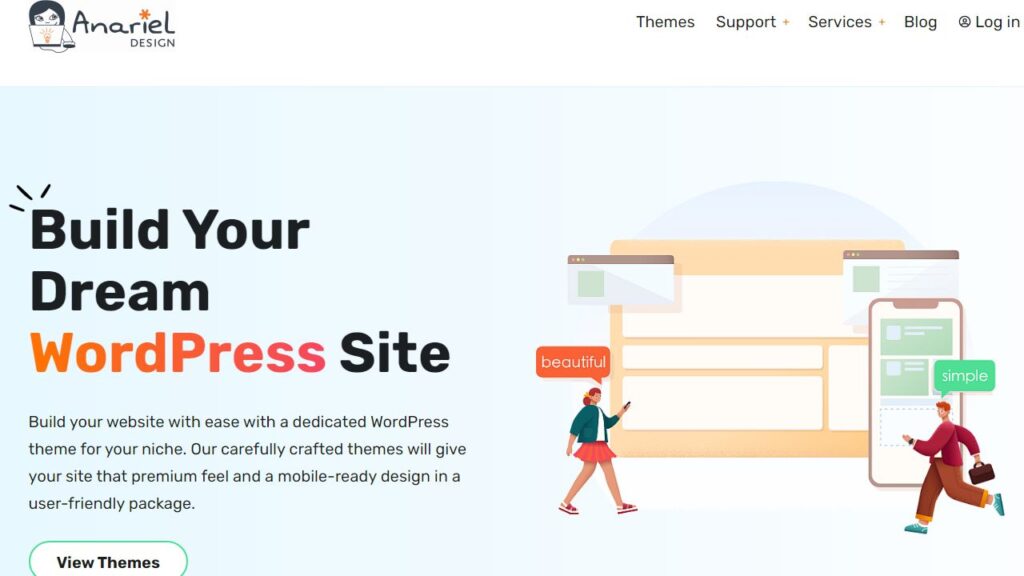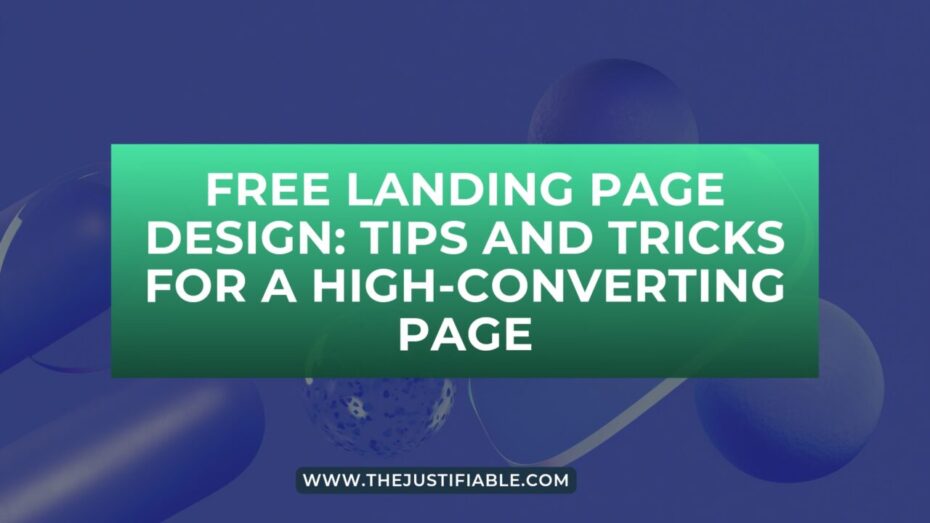Disclosure: This post contains affiliate links, which means that if you click on them and make a purchase, I will receive a commission. Read our Disclaimer for More.
The profession and art of web designing have become more significant than ever. The evolution of digital platforms and the increasing demand for visually stunning and functional websites have paved the way for web designers to truly shine and make a profound impact.
The Role of a Web Designer in Today’s Digital World
Web designers have now transcended from merely being individuals who design and update websites to professionals who craft digital experiences. As a web designer in today’s digital landscape, one isn’t just dealing with a client’s request but is often engaging with a global audience.
Every design choice they make, every layout they create, and every color palette they select has the power to engage, inspire, and connect with individuals from various walks of life.
Web designers wear multiple hats. They are the architects of digital experiences, ensuring that users can navigate and interact with platforms seamlessly. They are the artists, painting stories and values of brands on the digital canvas, ensuring that every visual element resonates with the brand’s voice and identity.
And importantly, they are the innovators, always on the lookout for newer technologies, tools, and trends that can redefine the way we perceive digital platforms.
The Merging of Creativity and Functionality
Historically, the line between design and function was stark. But today, creativity and functionality are two sides of the same coin. An aesthetically pleasing design can captivate users, but if it lacks functionality and user-friendliness, it can deter them just as quickly. Conversely, a highly functional website that lacks creative flair might not leave a lasting impression.
A web designer’s challenge lies in balancing these two elements. It’s about making innovative design choices while ensuring that the core functionality remains intact. It’s about using colors, typography, and layouts creatively to evoke specific emotions while ensuring that the user’s journey on the website is as intuitive and straightforward as possible.
This marriage of creativity and functionality also extends to mobile platforms. With an increasing number of users accessing websites from mobile devices, web designers are now reimagining and restructuring web pages to be more mobile-friendly without compromising on their creative vision.
1. Understand the Basics of Good Design
In the vibrant landscape of digital aesthetics, a web designer’s mastery often begins with a profound grasp of the fundamental principles of design. This is not merely about knowing the latest tools or mastering cutting-edge software. At its core, it’s about understanding the very essence of design that transcends digital platforms.
Fundamental Design Principles Every Web Designer Should Know
For a web designer, the universe of design is vast, and it’s easy to get lost in the myriad of possibilities, especially when creating for the digital domain. Yet, there are timeless design principles that serve as guiding stars.
Contrast is often the unsung hero, playing a pivotal role in highlighting differences, making text readable against backgrounds, and creating focal points on web pages. Whether it’s through color, size, or typography, adept use of contrast ensures that a website is both captivating and user-friendly.
Balance in design, much like in nature, brings harmony. It’s the thoughtful distribution of elements, ensuring that no part of the design overwhelms another. This can be achieved symmetrically, where elements are mirrored, or asymmetrically, creating balance through varied shape sizes and positions.
Hierarchy ensures clarity. It’s about structuring content in a way that guides the viewer’s eye from the most critical element to secondary ones. Every web designer must craft a clear hierarchy to ensure users intuitively understand content importance and flow.
Repetition, or consistency, fortifies brand identity. Whether it’s the recurrent use of colors, fonts, or design elements, repetition gives a sense of cohesion and brand familiarity.
Lastly, alignment gives a design structure. It isn’t just about placing elements neatly but aligning them in a way that creates a cohesive and connected visual story.


Importance of a Solid Foundation
At the crux of a web designer’s journey is a foundation built on these fundamental principles. With a robust foundation, a web designer is not merely reacting to trends or mimicking popular designs. Instead, they’re creating with purpose, intent, and vision. They’re equipped to make informed choices, ones that align with the brand’s identity and resonate with its audience.
Understanding these principles is akin to a musician understanding musical scales. While they may not strictly adhere to them in every composition, knowing them deeply allows for more intentional deviations, innovations, and experimentations. For a web designer, this foundation not only boosts confidence but serves as an anchor in the ever-evolving digital design seascape.
2. Stay Updated with the Latest Design Trends
Web designer aficionados and professionals alike know that the digital design realm is in perpetual motion. Just like fashion or art, trends in web design change, evolve, and sometimes even loop back around. Being abreast of these changes is not just an advantage—it’s essential. It ensures that a web designer’s creations remain relevant, engaging, and in line with the modern user’s expectations.
How Evolving Trends Shape Web Designer Choices
In the digital epoch, trends don’t merely indicate what’s “in vogue”; they often reflect shifts in technology, user behavior, and societal norms. For the astute web designer, a trend isn’t just a fleeting style to emulate but a deeper sign of where the digital world is moving.
For instance, the rise of minimalistic designs in recent years isn’t just an aesthetic preference. It’s a reflection of the collective desire for simplicity, clarity, and faster loading times. Similarly, the surge in dark mode design speaks to the increasing number of users browsing late into the night and the collective emphasis on eye comfort.
Evolving trends offer web designers a peek into user expectations. They reveal what users are engaging with, what they find intuitive, and what experiences they are growing to expect. By tuning into these shifts, web designers can craft websites that aren’t just contemporary but are also aligned with the present-day user’s psyche and needs.
Resources to Keep You in the Loop
For a web designer, staying updated doesn’t need to be a daunting task. The digital age is abundant with resources designed to keep one informed.
Design blogs are treasure troves of knowledge. Websites like Smashing Magazine, Awwwards, or Web Designer Depot often dissect the latest trends, providing insights into their rise and potential impact.
Podcasts focused on design, such as “The Web Ahead” or “Design Matters,” bring experts and thought leaders to discuss shifts in the design paradigm, offering deep dives into what’s shaping the industry.
Online courses on platforms like Udemy, Coursera, or LinkedIn Learning are continually updated, ensuring that learners get a taste of the latest in design thinking and methodologies.
Design conferences and webinars offer immersive experiences. Not only do they spotlight trends, but they also foster community engagement, allowing designers to discuss and debate the merits and implications of emerging styles.
Staying updated is a blend of self-driven learning and community engagement. In the rapidly shifting sands of web design, being in the know isn’t just about being trendy; it’s about staying relevant and continually delivering the best to clients and users alike.
3. Optimize for User Experience (UX)
When a web designer delves into the intricacies of their craft, the user stands central to their canvas. Beyond the aesthetics and coding finesse lies the essence of web design: User Experience, or UX. It’s the invisible thread that guides a user’s journey on a website, determining how they interact, explore, and feel during their digital sojourn. Ensuring a top-notch UX is no longer optional; it’s fundamental.
The Web Designer’s Role in Crafting Seamless UX
The realm of a web designer is not confined to colors, fonts, or animations. One of their primary mandates is crafting a user journey that is intuitive, engaging, and responsive. It’s about anticipating a user’s needs and designing pathways that cater to them with ease and simplicity.
Imagine entering a vast digital library. As beautiful as its virtual architecture might be, if a visitor can’t easily find the book they’re looking for, the design, despite its beauty, fails. That’s the essence of UX. It’s the invisible librarian that guides the user, ensuring they find their book swiftly and enjoyably.
Web designers play the role of this librarian. They map out the pathways, ensuring that buttons are not just aesthetically pleasing but are also positioned logically. They ensure that the navigation is intuitive, content is easily digestible, and interactive elements enhance the overall experience rather than detract from it.
The true mark of a skilled web designer lies not just in creating a visually stunning site, but in designing one where users feel valued, understood, and catered to.
Quick Tips for Enhancing User Interactivity
In the vast digital landscape, user interactivity serves as the bridge between passive browsing and active engagement. For the seasoned web designer, this means designing elements that not only catch the eye but also invite users to engage.
One pivotal approach is ensuring responsive feedback. When a user clicks a button or hovers over an interactive element, subtle animations or color changes can signify the action, providing an intuitive feel to the user’s actions.
Consistency is key. Whether it’s the color of hyperlinks or the style of pop-up boxes, maintaining uniformity ensures users aren’t left second-guessing their interactions.
Speed is a silent game-changer. A web designer must optimize media and employ efficient coding practices, ensuring that interactive elements load swiftly. In the digital realm, even a delay of a few seconds can deter a user.
Lastly, prioritizing mobile interactivity is crucial. With a surge in mobile browsing, interactive elements must be touch-friendly, ensuring that the mobile user experience is just as enriching as on larger screens.


4. Embrace the Power of Typography
For a web designer, typography is more than just selecting a font from a dropdown menu. It’s an art and science intertwined, offering an avenue to convey mood, tone, and identity. Just as an architect considers the material and structure of a building, a web designer must recognize that the typeface they choose and how they employ it can shape a user’s entire digital experience.
Making Text Part of Your Design Canvas
In the realm of web design, text isn’t just a vessel for content; it’s a pivotal design element. A skilled web designer recognizes that typography can elevate a design from good to great. It’s not about filling white spaces with words; it’s about integrating text seamlessly into the fabric of the design.
Imagine a pristine art gallery. The walls are white, the lighting is perfect, and the paintings are masterpieces. Now, imagine the descriptions beside each painting: If they’re in a jarring font or are placed awkwardly, the entire ambiance of the gallery is disrupted. The role of typography in web design is similar. It either harmonizes with the overall aesthetic or, if chosen carelessly, disrupts it.
The choice of size, weight, and spacing of text can dictate the flow of a website. A web designer, through thoughtful typography, can guide a user’s gaze, subtly emphasizing important information and ensuring a coherent visual narrative.
The Psychological Impact of Font Choices
At the intersection of design and psychology, typography stands tall. Each font tells a story, evoking emotions and setting a tone. A web designer, armed with knowledge of these subtle cues, can craft experiences that resonate deeply with users.
Serif fonts, with their traditional appearance, often evoke feelings of reliability and formality. They’re reminiscent of print, newspapers, and established institutions. On the other hand, sans-serif fonts, with their clean lines, feel modern and approachable. They’re often employed by brands aiming for a fresh, contemporary image.
Script fonts, with their elegant flow, are associated with creativity and luxury. However, they require a deft touch, as overuse can make a design feel cluttered. Conversely, monospace fonts, often used to represent code, convey a technical, precise vibe.
A web designer doesn’t just select a font; they select an emotion, a mood, and a voice. By understanding the psychological undertones of typefaces, they can ensure that the text not only conveys information but also enhances the brand’s message and identity.
5. Prioritize Mobile-First Design
For the modern web designer, the ubiquity of mobile devices has reshaped the design playground. Gone are the days when websites were primarily crafted for the vast landscapes of desktop monitors.
In today’s digital age, the compact screens of smartphones and tablets take precedence. Embracing a mobile-first design approach is not merely about adaptability; it’s about recognizing and responding to the primary digital touchpoint of today’s users.
Why Every Web Designer Should Think Mobile-First
When the internet was in its nascent stages, websites were a domain of desktop computers. However, the technological tide has shifted dramatically. With the proliferation of smartphones, more users now access the web through their mobile devices than desktops. For a web designer, this is a seismic shift in user behavior that cannot be ignored.
A mobile-first approach is an acknowledgment of this new reality. It’s about recognizing that the smaller screen is not a constrained version of the larger one but a unique platform with its set of opportunities and challenges.
The immediacy of mobile devices, from quick searches to social media scrolls, demands that websites be not just mobile-friendly but mobile-optimized. The shorter attention spans, the touch-based navigation, and the diverse screen sizes all necessitate a design ethos that places mobile at its core.
Moreover, search engines, recognizing this mobile dominance, have adjusted their algorithms. Mobile-optimized sites now rank better, making a mobile-first approach crucial not just from a user experience standpoint but also for optimal search visibility.


Tips for Creating Fluid and Responsive Designs
Crafting a mobile-first design does not imply neglecting the desktop experience. It’s about ensuring fluidity and responsiveness across all device types. For a web designer, this means understanding the constraints and capabilities of mobile devices and weaving them into the design DNA.
Touch-friendly navigation is paramount. Buttons need to be easily tappable, and interactive elements should be spaced to prevent accidental clicks. Given the limited real estate, content hierarchy is essential. A web designer needs to discern what elements take priority, ensuring that crucial information is front and center.
Optimization is the watchword. With mobile devices often relying on cellular data, websites need to be lightweight, ensuring quick load times. High-resolution images, while stunning on a desktop, can be a drag on mobile. Hence, adaptive image solutions, which adjust based on the viewing device, can be a game-changer.
Lastly, testing is imperative. The world of mobile devices is diverse, from screen sizes to operating systems. A design that looks impeccable on one device might break on another. Thus, rigorous testing across a spectrum of devices ensures that all users get a consistent and engaging experience.
6. Use Color Schemes Strategically
For a web designer, color is more than a mere aesthetic choice. It’s a powerful tool, wielding influence over user perceptions, emotions, and behaviors. In the vast spectrum of hues, shades, and tints lies a language, a silent communicator that can make or break a design. Utilizing color schemes strategically is not about following trends but understanding the psychology and purpose behind each selection.
Color Theory in Web Designer’s Toolbox
Within the canvas of a web designer, color theory acts as a compass, guiding choices that resonate with the intended message and audience. At its core, color theory is an understanding of how colors interact, contrast, and harmonize. It’s a study of relationships, of how one hue can amplify, mute, or alter the perception of another.
The primary colors – red, blue, and yellow – form the foundation. By blending these, a plethora of secondary and tertiary colors emerge, each carrying its weight and significance. For a web designer, this palette is both an art form and a science. Complementary colors, situated opposite each other on the color wheel, create vibrancy when used together, while analogous colors, situated side by side, offer a harmonious blend.
Yet, it’s not just about picking appealing combinations. It’s about understanding the target audience, the cultural implications of colors, and the brand’s identity. For instance, while red might signify passion and urgency in certain contexts, it might represent danger or caution in others.
Evoking Emotions and Actions Through Color
Beyond the aesthetics, colors have an uncanny ability to evoke emotions and drive actions. A web designer, aware of these subtle cues, can strategically craft experiences that align with a brand’s goals.
Blue, often associated with trust and calm, is a favorite for corporate websites and tech brands. Green, reminiscent of nature and tranquility, is widely used by wellness and environmental sites. Red, the color of urgency and passion, often finds its way into call-to-action buttons, urging users to act swiftly.
However, these associations aren’t universal. Cultural nuances play a significant role. For instance, while white signifies purity and simplicity in many Western cultures, it’s often associated with mourning in some Eastern traditions.
Furthermore, the context matters. A shade of gray that appears professional and sleek on a tech website might come off as drab on a children’s site. Hence, the choice of colors is not in isolation but in relation to the overall design, the accompanying visuals, and the content.
A skilled web designer does not randomly select colors; they curate them, ensuring that every hue, shade, and gradient aligns with the website’s purpose, resonates with its audience, and amplifies its message.
7. Get Inspired but Don’t Plagiarize
For every web designer, the journey of creation is often paved with inspiration. From intricate layouts to innovative animations, the digital realm is brimming with stellar designs that can spark ideas. However, while inspiration is a catalyst for creativity, it’s essential to tread carefully, ensuring that admiration does not devolve into imitation. The key is to absorb, adapt, and augment, not replicate.
Walking the Line Between Inspiration and Originality
In the world of web design, where trends evolve rapidly, and themes can seem ubiquitous, maintaining originality can be challenging. However, for a web designer, it’s this challenge that differentiates the mundane from the magical.
Drawing inspiration is about recognizing brilliance and allowing it to stimulate your creative muscles. Perhaps it’s a unique color combination, a novel typography style, or an interactive element that captures attention. The goal is not to mirror these elements but to let them act as seeds, from which your original concepts can grow.
For instance, a web designer might admire the minimalist layout of a website. Instead of copying the design, they could harness the essence of minimalism, applying their touch, and integrating elements that align with the project’s unique requirements.
Originality, in essence, is not about reinventing the wheel but offering a fresh perspective, a novel twist, or a personalized touch. It’s about taking the familiar, melding it with innovation, and producing a design that resonates yet stands apart.
Protecting Your Web Designer Reputation
In the digital age, reputation is currency. For a web designer, integrity and authenticity are not just ethical standards but professional imperatives. With tools and platforms making it easier to detect similarities in design, even unintentional resemblances can raise eyebrows and invite scrutiny.
Plagiarism, intentional or otherwise, can have dire repercussions. It not only diminishes trust among clients but can lead to legal complications, especially if copyright infringements come into play. Moreover, in a community-driven industry, a tarnished reputation can hinder collaborations, partnerships, and growth opportunities.
Protecting one’s reputation entails a commitment to continuous learning, understanding the fine line between homage and theft, and investing time in research. Before finalizing a design, it’s prudent for a web designer to cross-check, ensuring that their creation, while inspired, retains its distinct identity. Seeking feedback, employing plagiarism-check tools, and staying updated with copyright laws are steps in the right direction.
8. Continuously Test and Iterate Your Designs
For a web designer, the creative process does not end once a design is launched. The digital canvas is dynamic, with user behaviors, preferences, and technological advancements constantly evolving.
Recognizing this fluidity, a web designer’s role extends beyond creation to encompass evaluation and refinement. Through continuous testing and iteration, designs can remain relevant, effective, and user-centric.
The Importance of A/B Testing for a Web Designer
A/B testing, also known as split testing, is an invaluable tool in a web designer’s arsenal. At its core, it’s an experimental approach where two versions of a webpage — the current design (A) and a new variant (B) — are presented to users to determine which one performs better concerning a specific goal, be it conversions, engagement, or any other metric.
The beauty of A/B testing lies in its simplicity and clarity. By changing one element at a time — perhaps a call-to-action button’s color, a headline’s phrasing, or an image placement — a web designer can glean insights into what resonates with users and what doesn’t. It eliminates guesswork, replacing assumptions with data-driven decisions.
Moreover, A/B testing is not a one-off exercise. As user behaviors shift and design trends change, continuous testing ensures that a website remains optimized. It allows web designers to adapt to the ever-changing digital landscape, ensuring that designs not only look aesthetically pleasing but also achieve their intended objectives.
Ensuring Design Elements Resonate with the Audience
Every design element, from color choices to typography, communicates a message. But does this message resonate with the intended audience? This question is pivotal for a web designer. A design that might seem compelling to the creator might not elicit the same response from users.
Feedback, both quantitative and qualitative, becomes the bridge between a web designer’s vision and the audience’s perception. Tools like heatmaps can show where users are focusing their attention, while user surveys can provide insights into what they like or dislike about a design.
Furthermore, with the rise of diverse user personas, cultural nuances, and accessibility needs, ensuring resonance goes beyond aesthetics. It encompasses usability, inclusivity, and relevance. For instance, a design tailored for a younger demographic might need to be iterated for an older audience, considering their unique preferences and potential accessibility requirements.
Regularly testing design elements with the target audience and iterating based on feedback ensures that a design not only meets but exceeds user expectations. It’s a commitment to excellence, placing user experience at the heart of the design process.
9. Collaborate and Gather Feedback
In a web designer’s journey, the path to perfection is rarely trodden alone. Collaboration and feedback serve as signposts, guiding designers towards excellence, ensuring that their creations resonate, are functional, and align with objectives. Inviting perspectives, both from peers and users, is not a sign of doubt but an emblem of dedication to crafting the best possible design outcomes.
The Web Designer’s Guide to Constructive Criticism
For a web designer, every design is a piece of art, an amalgamation of creativity, skill, and vision. However, art, in its essence, is subjective. What might seem flawless to one might appear flawed to another. Herein lies the value of constructive criticism.
Receiving feedback is not about questioning a designer’s expertise but enhancing it. Constructive criticism provides a fresh set of eyes, highlighting areas of improvement that might have been overlooked. However, for feedback to be constructive, it needs to be specific, actionable, and well-intentioned.
For web designers, it’s crucial to approach criticism with an open mind. It’s not a personal affront but a professional aid. The key is to distill feedback, discerning genuine insights from mere opinions. Asking clarifying questions, seeking examples, and understanding the rationale behind the feedback can aid this process.
Simultaneously, giving constructive criticism is an art in itself. For fellow designers and collaborators, it’s pivotal to be empathetic, clear, and solution-oriented. Instead of focusing on what’s wrong, the emphasis should be on how it can be made better. This fosters a collaborative spirit, where feedback becomes a dialogue, a mutual quest for design excellence.
Using Feedback to Refine and Perfect Designs
Feedback, when harnessed effectively, is a catalyst for design evolution. For a web designer, every piece of feedback, be it from user testing, peers, or clients, offers an opportunity to refine and perfect.
However, it’s not about implementing every suggestion but discerning which feedback aligns with the design’s objectives and the target audience’s needs. Sometimes, feedback might be contradictory, with different users having varied preferences. Here, a designer’s expertise comes to the fore, balancing feedback with design principles and project goals.
Iterating based on feedback is an ongoing process. As designs evolve and new feedback emerges, continuous refinement ensures that the design remains relevant and effective. This cycle of design-feedback-refinement not only elevates the final product but also enriches a designer’s skills, knowledge, and adaptability.
Conclusion
Web designers stand at the intersection of art and technology, where the balance of creativity and functionality manifests as the digital experiences we encounter daily. As we wrap up this exploration into mastering web design, it’s essential to reflect on the journey, the growth, and the boundless possibilities that lie ahead.
The Ever-Evolving Journey of a Web Designer
The path of a web designer is dynamic, reflecting the ever-shifting digital landscape. With every project undertaken, new challenges emerge — be it the evolution of design trends, the introduction of novel technologies, or the changing preferences of users. Each of these elements adds layers of complexity, demanding adaptability, continuous learning, and a willingness to evolve.
However, this perpetual flux is not a burden; it’s a boon. It ensures that a web designer’s role never stagnates, that there’s always something new to learn, explore, and incorporate. This evolution, while challenging, brings with it a sense of fulfillment, the joy of mastering new skills, and the thrill of creating designs that resonate in fresh and impactful ways.
The Rewards of Mastery and Continued Growth
Achieving mastery in web design is not a finite goal; it’s a continuous endeavor. It’s about refining skills, staying attuned to trends, and remaining receptive to feedback and collaboration. The rewards, however, are manifold.
Firstly, there’s the intrinsic satisfaction of creating. Every design, when crafted with expertise and passion, stands as a testament to a web designer’s dedication, creativity, and skill. But beyond personal fulfillment, mastery paves the way for professional accolades, from recognition within the design community to opportunities to work on high-profile projects.
Moreover, continued growth ensures longevity in the profession. In an industry characterized by rapid changes, those who adapt, learn, and evolve position themselves as invaluable assets. They not only thrive in the present but also shape the future of web design, pioneering trends, and setting standards.






